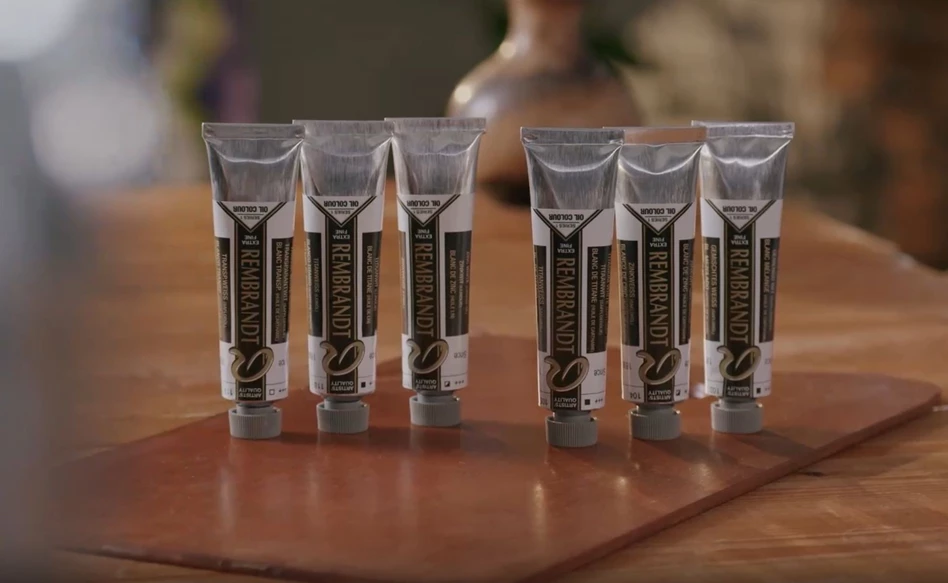
Whites
Rembrandt offers a wide range of white oil paints, each with different properties and applications. But which of these whites is best suited for your artwork? That depends on what properties you are looking for. This video demonstrates the whites in the Rembrandt oil paint collection. To showcase each shade’s properties, they were mixed with 281 Transparent Yellow Green.
The following shades were used in this video:
- 103 Mixed White: a neutral white. Contains both zinc and titanium pigments. Based on safflower oil.
- 104 Zinc White: a semi-opaque, cool white. Makes colours lighter without weakening the original colour. Based on safflower oil and best suited for the top layer of your painting.
- 105 Titanium White: an opaque, warm white. Great for toning down intense colours and creating opaque mixing shades. Based on safflower oil and best suited for the top layer of your painting.
- 117 Zinc White: a semi-opaque, cool white. Makes colours lighter without overpowering the original colour. Based on linseed oil and best suited for the lower layers of your painting.
- 118 Titanium White: an opaque, warm white. Great for toning down intense colours and creating opaque mixing shades. Based on linseed oil and best suited for the lower layers of your painting.
- 119 Transparent White: lightens transparent colours, great for glazing techniques. Based on safflower oil.
The Rembrandt oil paint collection also includes a pearlescent white called Pearl White (817), a transparent white that adds an iridescent sheen to your work. This white is based on safflower oil and works best when applied in a thin layer on its own or mixed with transparent colours to create custom pearlescent shades.
Linseed vs. safflower oil
Besides the pigments used, the binder also impacts the paint's properties. As linseed oil shows some yellowing over time, it is sometimes replaced by safflower oil, particularly for white paint. Safflower oil is less yellowing, which makes it perfect for use in the top layers of your painting. Whites based on safflower oil dry more slowly than whites based on linseed oil, however, so they are less suitable for thickly painted areas or lower paint layers. For the lower layers, we recommend using a white based on linseed oil, as these have a similar drying time to the rest of the oil colour range.
Other Oil Colour Blogs

Transparent Oxides
Oil Colour
Whites
Oil colour
Tonal Greys
Oil colour
Cadmiums and alternatives
Oil colour
Red shades
Oil colour
Blue shades
Oil colour
Green shades
Oil colour